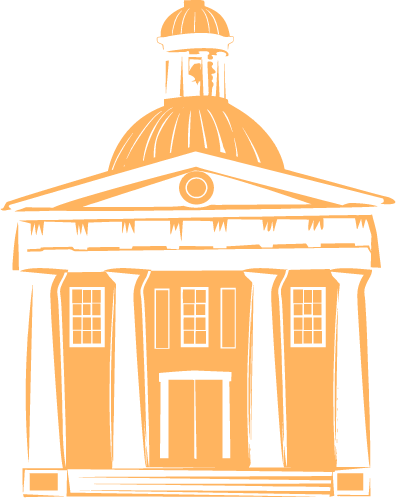The Neighborhood at a Glance
Today's Garland Hill was originally the farm of William Lynch, Sr., the son of Lynchburg founder John Lynch. Blackwater Creek forms the boundary for much of the neighborhood along with a portion of Fifth Street and the valley near Old City Cemetery. The oldest home still in its original location in the city is at 619 First Street in Garland Hill. The so-called “Lynch House” was built by the Lynch family in 1787. William Lynch, Jr., left the land to his cousin Celine Dupuy, who sold off block-size lots beginning in 1845. By the mid-19th century there were so many members of the Garland family living in the neighborhood that the hill became known as Garland Hill.
General John Garland United States Army, ca. 1860. Like many families during the Civil War, the Garlands had family members fighting for both sides.
The Garland Family
Samuel Garland, Sr., was a local attorney who also owned large amounts of land in Mississippi. His brother Maurice practiced law with him as did his nephew Samuel Garland, Jr., named in his honor.
The Garland family had multiple connections to the Civil War. General John Garland was brother to Samuel, Sr., and Maurice and served in the United States Army from 1813 to 1861. His daughter married future Confederate General James Longstreet, and his sister-in-law married Ulysses S. Grant, future commander of Union troops during the Civil War and U.S. president. John Garland sided with the Union when the war broke out but soon died in 1861. His nephew Samuel, Jr., became a general in the Confederate army and was killed in 1862 during the Antietam Campaign.
Biggers Elementary School
Abram Biggers, first superintendent of City Schools, 1871-1878
At the corner of Fifth and Madison Streets once stood Biggers School, named for Lynchburg's first school superintendent Abram Biggers.
Designed by City Engineer August Forsberg with mansard towers at each end, the school served elementary students from its opening in 1881 until 1966. The building was demolished and the property is now a public playground.
Biggers School once dominated the corner of Fifth and Clay Streets. It is now the site of Biggers Playground.
James Gilliam, Sr., Home, built 1912. Designed by architect Stanhope Johnson, the house occupies two lots in Garland Hill and combines elements of Georgian and Spanish styles.
Elaborate Houses
More elaborate homes were built along Madison and Harrison Streets after 1865. The Christian, Watkins, and Craddock families, investors in coal, iron, and shoes respectively, built spacious Queen Anne style homes ca. 1900. Banker James Gilliam, Sr., built a large home at Fifth and Madison Streets in 1912 that combined Mediterranean and classical elements.





